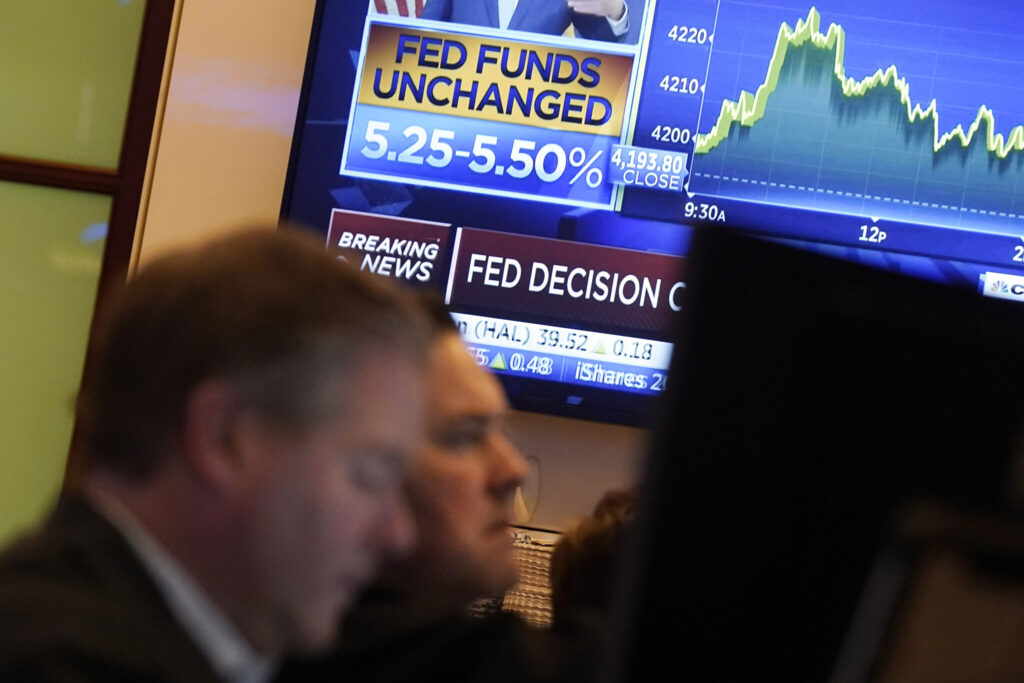Higher energy and housing prices boosted overall U.S. inflation in December, a sign that the Federal Reserve’s drive to slow inflation to its 2% target will likely remain a bumpy one. Thursday’s report from the Labor Department showed that overall prices rose 0.3% from November and 3.4% from 12 months earlier. Those gains exceeded the previous 0.1% monthly rise and the 3.1% annual inflation in November. The December figures came in slightly above economists’ forecasts.
Quick Read
- Inflation Higher than Expected: U.S. inflation in December rose more than anticipated, with overall prices increasing by 0.3% from November and 3.4% from the previous year.
- Primary Drivers: The rise in inflation was mainly driven by higher housing and energy costs, including electricity and gasoline, along with an increase in food prices.
- Core Prices Remain Steady: Core prices, which exclude volatile food and energy costs, saw a steady month-over-month increase of 0.3%, mirroring November’s rise.
- Annual Core Price Increase: Year-over-year core prices rose by 3.9%, the mildest pace since May 2021, slightly down from the 4% increase in November.
- Inflation Cooling Since Mid-2022: Overall inflation has been cooling since reaching a 40-year high of 9.1% in mid-2022, though it remains elevated.
- Public Dissatisfaction: Despite steady economic growth and low unemployment, polls indicate public dissatisfaction with the economy, largely due to the lingering effects of high inflation.
- Federal Reserve’s Target: The Federal Reserve aims to reduce year-over-year inflation to its 2% target level, with consumer expectations for inflation dropping to 3% over the next year.
- Supply Chain Improvement: The end of supply chain backlogs, which previously fueled inflation pressures, was noted as a positive sign.
- Challenge in Achieving 2% Target: Reducing inflation to around 3% was easier than reaching the Fed’s 2% target could be, according to some economists.
- Wage Growth and Workforce Concerns: Average hourly wages rose by 4.1% year-over-year in December, and a decrease in workforce participation could lead to higher wages and potential perpetuation of inflation.
- Fed’s Interest Rate Increases: The Federal Reserve has been raising interest rates since March 2022 as part of its strategy to control inflation.
The Associated Press has the story:
US inflation edges up, fueled by energy and housing prices
Newslooks- WASHINGTON (AP) —
Higher energy and housing prices boosted overall U.S. inflation in December, a sign that the Federal Reserve’s drive to slow inflation to its 2% target will likely remain a bumpy one.
Thursday’s report from the Labor Department showed that overall prices rose 0.3% from November and 3.4% from 12 months earlier. Those gains exceeded the previous 0.1% monthly rise and the 3.1% annual inflation in November. The December figures came in slightly above economists’ forecasts.
Housing costs accounted for more than half the increase in prices from November to December. Energy costs, led by electricity and gasoline, along with food prices, also contributed to the increase.
Excluding volatile food and energy costs, though, so-called core prices rose just 0.3% month over month, unchanged from November’s increase. Core prices were up 3.9% from a year earlier — the mildest such pace since May 2021 and down from November’s 4% year-over year gain. Economists pay particular attention to core prices because, by excluding costs that typically jump around from month to month, they are seen as a better guide to the likely path of inflation.
Overall inflation has cooled more or less steadily since hitting a four-decade high of 9.1% in mid-2022. Still, the persistence of still-elevated inflation helps explain why, despite steady economic growth, low unemployment and healthy hiring, polls show many Americans are dissatisfied with the economy

That disconnect, which will likely be an issue in the 2024 elections, has puzzled economists and political analysts. A key factor is the public’s exasperation with higher prices. Though the inflation rate has been falling more or less steadily for a year and a half, the lingering financial and psychological effects of the worst bout of inflation in four decades have soured many Americans on the economy. Prices are still 17% higher than they were before the inflation surge began and are still rising.
Pollsters and economists say there has never been as wide a gap between the underlying health of the economy and public perception. Wage gains have outpaced inflation in recent months, meaning that Americans’ average after-inflation take-home pay is up. Yet a poll conducted in November by The Associated Press-NORC Center for Public Affairs Research, about three-quarters of respondents described the economy as poor. Two-thirds said their expenses had risen.
The Federal Reserve, which began aggressively raising interest rates in March 2022 to try to slow the pace of price increases, wants to reduce year-over-year inflation to its 2% target level. And there are solid reasons for optimism that inflationary pressure will continue to recede in the coming months.
The Federal Reserve Bank of New York reported this week, for example, that consumers now expect inflation to come in at just 3% over the next year, the lowest one-year forecast since January 2021. That’s important because consumer expectations are themselves considered a telltale sign of future inflation: When Americans fear that prices will keep accelerating, they will typically rush to buy things sooner rather than later. That surge of spending tends to fuel more inflation.
But that nasty cycle does not appear to be happening.
And when Fed officials discussed the inflation outlook at their most recent meeting last month, they noted some hopeful signs: In particular, they noted an end to the supply chain backlogs that had caused parts shortages and inflation pressures.
Many economists have suggested that slowing inflation from 9% to around 3% was easier to achieve than reaching the Fed’s 2% target could prove to be.
“Inflationary pressures, while generally inching lower, remain stubbornly higher than expectations as the so-called ‘last mile’ requires more time to reach the final goal,″ said Quincy Krosby, chief global strategist for LPL Financial.
The December U.S. jobs report that was issued last week contained some cautionary news for the Fed: Average hourly wages rose 4.1% from a year earlier, up slightly from 4% in November. And 676,000 people left the workforce, reducing the proportion of adults who either have a job or are looking for one to 62.5%, the lowest level since February.
That is potentially concerning because when fewer people look for work, employers usually find it harder to fill jobs. As a result, they may feel compelled to sharply raise pay to attract job-seekers — and then pass on their higher labor costs to their customers through higher prices. That’s a cycle that can perpetuate inflation.






